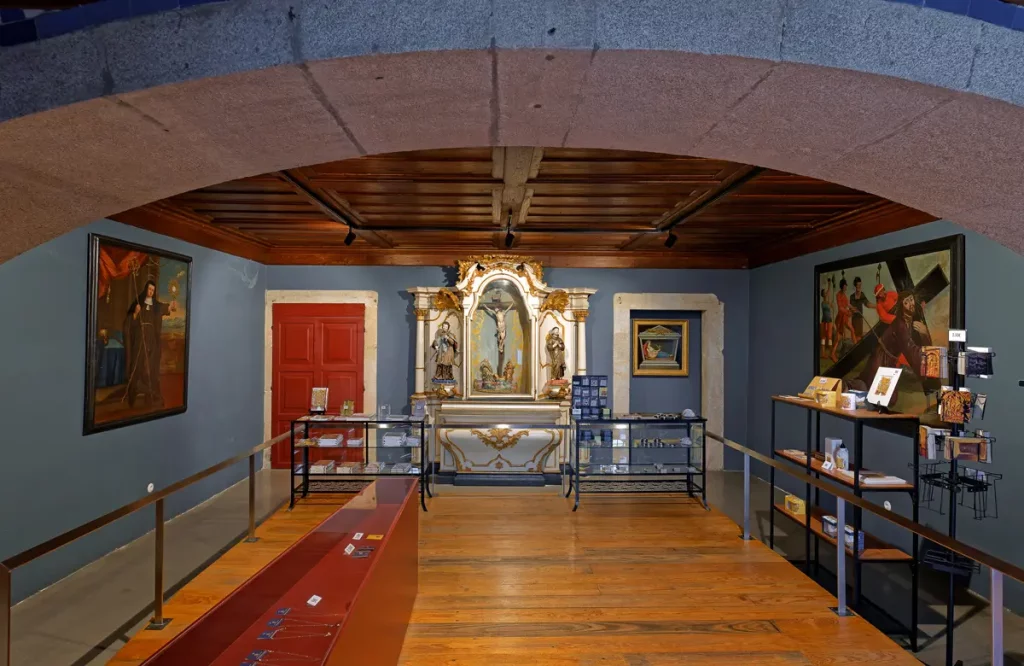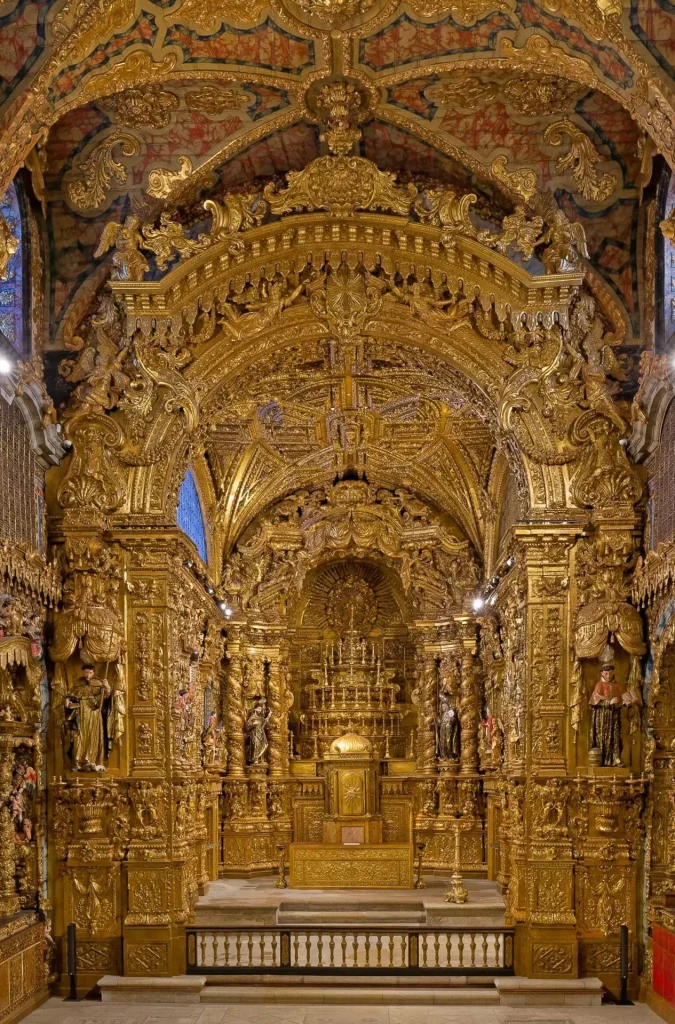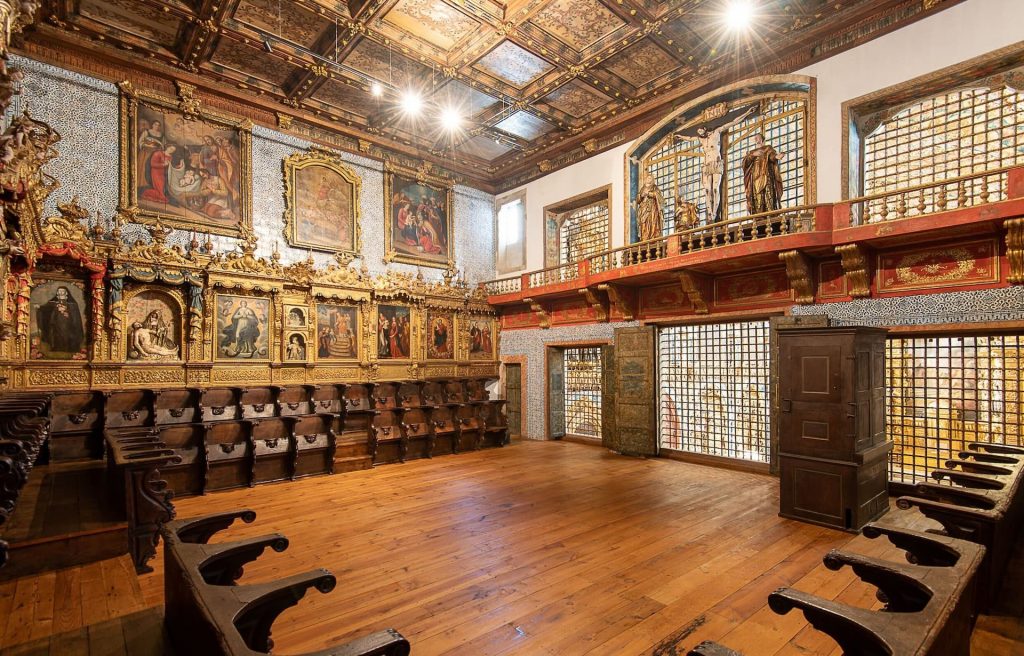Upper choir
Serving the same function as the lower choir, the only difference is that this space was reserved for the abbess, professed nuns and other important members of the convent, following a hierarchical structure. The current armchair, whose artistic quality lies mainly in the misericords, the tile cladding, and the coffered ceiling, with vegetal paintings, were executed between 1680 and 1683, completely transforming the space. One of the main figures responsible for these works was the master carpenter Manuel da Rocha, a regular collaborator of the convent during the last quarter of the century.



